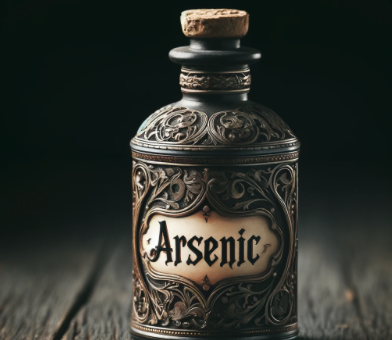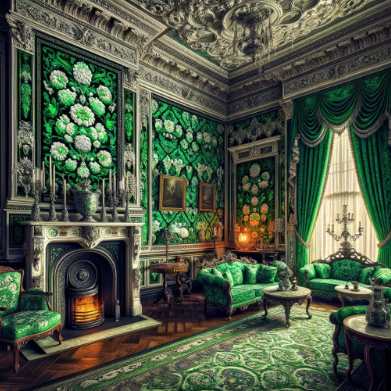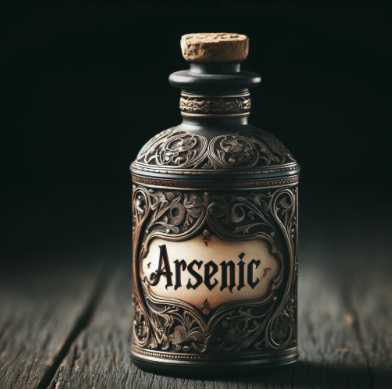
During the Victorian era, arsenic was used in a variety of ways, some of which seem quite bizarre by modern standards.
Here are some of the most notable uses.
1. Green Pigments for Wallpaper and Fabrics
Perhaps one of the most infamous uses of arsenic during the Victorian era was in the production of Scheele’s Green and later Paris Green, which were vibrant green pigments used extensively in wallpapers, paints, and fabrics.
These pigments could release arsenic dust into the air, leading to symptoms of arsenic poisoning in people who lived in rooms decorated with them.

2. Cosmetics
Arsenic was used in beauty products as it was believed to improve complexion and skin health.
Women used arsenic wafers and powders to achieve a pale, ghostly complexion that was fashionable at the time, not realizing the toxic effects.
3. Medicinal Remedies
Arsenic was a component of various medicines for a wide range of ailments, including syphilis, asthma, and cancer.
It was thought to have healing properties, although it often did more harm than good.
4. Rat Poison and Insecticides
Its effectiveness as a poison made arsenic a common ingredient in rat poisons and insecticides.
Unfortunately, this also led to accidental or intentional poisonings among humans.

5. Food and Drink Adulteration
Arsenic compounds were sometimes used to adulterate food and beverages to enhance color and sweetness.
For example, arsenic was used to make beer appear clearer and of a better quality.
6. Taxidermy
To preserve specimens, taxidermists used arsenic-laden soaps and powders. This practice made handling museum specimens potentially dangerous.
7. Murder
Arsenic became known as the “inheritance powder” due to its frequent use in discreetly murdering relatives or rivals, owing to its easy availability and the difficulty of detecting it in the body during the era.

